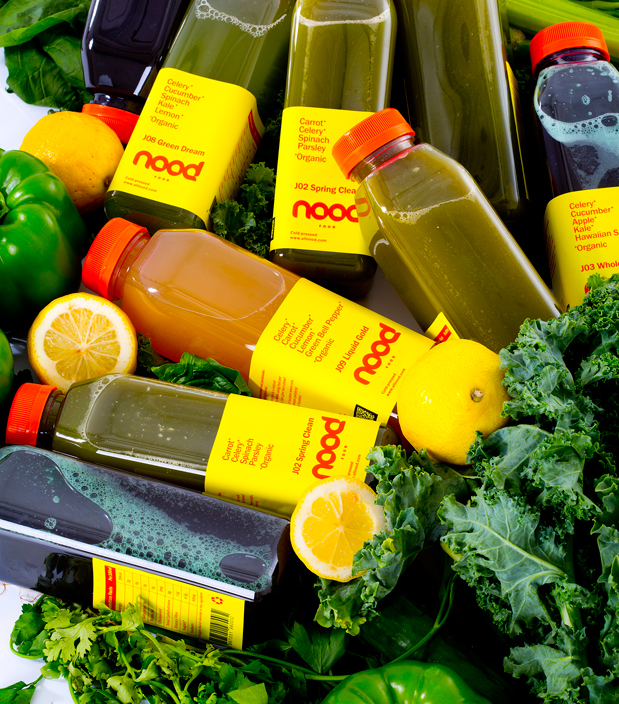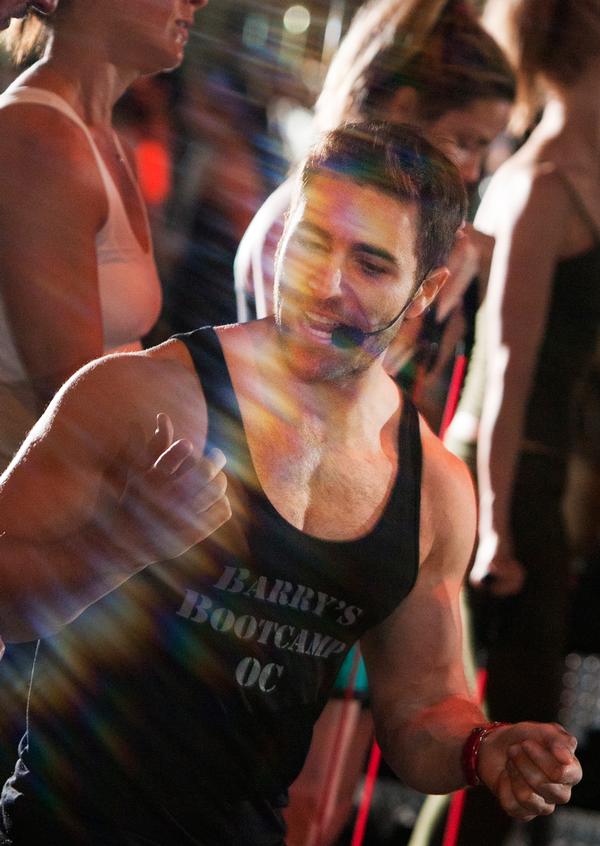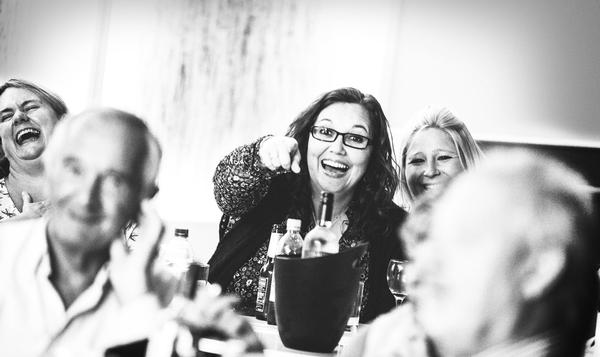



SELECTED
ISSUE
|
|
Leisure Management - Business booster

Secondary spend

|
|
| Business booster
|

Health clubs rely heavily on income from memberships. How can operators broaden
their revenue base by developing secondary income streams? Kath Hudson reports
|
|
|

|
Colin Grant
CEO
The Pure Group, Asia
The secret with secondary spend is making sure it complements what the customer is getting and fits with their profile and demographic.
For example, Apple has an ecosystem where customers buy one product and, almost immediately, they want to buy another product such as software or music. Similarly with Starbucks, people plan to purchase a coffee but frequently end up buying a sandwich or pastry as well.
In the same way, The Pure Group has built complementary businesses to its health club brand Pure Fitness: we have yoga studios under the Pure Yoga brand, Pure Apparel, and our healthy diet option nood food. Within these businesses we have other revenue streams too, such as workshops, private sessions, teacher trainings, retreats, private dance, PT, boxing training, and recovery sessions.
We don’t believe it’s effective to charge members for every single service, so we offer them a number of things for free such as towels, apples, DVDs, loans of iPods for their workouts, and some workshops.
However, what we do offer is the option to upgrade to other services that support our members’ desire for a healthy, integrated lifestyle.
Pic: nood food: Fresh, healthy nutrition – and a strong revenue stream

| |


|

The Pure Group has created
a Pure Apparel range |
|
|

|
Joey Gonzalez
CEO
Barry’s Bootcamp, US
There are no hard sells at Barry’s Bootcamp and we never pressure our members to spend money. We’ve built our business by listening to our members, providing them with the things they desire and giving them the opportunity to upgrade.
All the products we’ve developed are aspirational, top quality and fit the lifestyle brand we promote, so they sell themselves. We offer exclusive Barry’s-branded fitness and lifestyle apparel items – sometimes partnering with brands such as Nation, Splits 59 and Ramy Brook to collaborate on designs for their retail collections – as well as protein shakes at our Fuel Bar and healthy grab-n-go meals from local restaurants, such as Greenleaf Gourmet ChopShop.
Currently we’re improving the online shopping experience, making it easier for customers to purchase, as well as open it up to a wider market.
Rather than charge extra for essential services, we prefer to give members the option to upgrade for extra perks, so a tiered membership was introduced to cater for this. Our MVP package, for example, allows for advance booking of a specific treadmill or floor spot, a personalised concierge service, early sign-up and priority wait list.
Digital media is a much talked about trend and we’re currently researching options and collecting data on whether this would be a viable way to reach fans across the world – and if so, how we can monetise that. If we do go ahead with this, though, it will be imperative that we stay consistent and deliver a cohesive experience.
| |


|

Barry’s “aspirational products sell themselves” |
|
|

|
Emma Cherry
Regional Events Manager South-East
Everyone Active, UK
Everyone Active has identified running events as a good way for individual centres to hit and exceed budgets, use facilities in their down time, and introduce new audiences to the facilities. It’s a synergistic business as we already have event management experience, as well as food and beverage facilities on-site.
The south-east is the first of the three Everyone Active regions to introduce an events arm and has an annual revenue target of £1m.
We evaluate what might work on a site-by-site basis. Larger venues might lend themselves to big celebrations like christenings and weddings, as well as exhibitions, conferences and sporting spectacles such as boxing, MMA and Muay Thai. We have a large function hall at our leisure centre in Harrow which is pillar-less and can accommodate 1,800 people, so this has become a popular venue for Asian weddings.
Smaller sites lend themselves to events like comedy nights and craft fairs. We’re also thinking about pop-up cinema screenings in and around facilities for next year, which provides something new and exciting for existing members.
There have been a few challenges. It’s been important to strike a balance, doing everything we can to keep regulars happy when we have to take facilities out of use for a day, so wherever possible we try not to take bookings at short notice. Also, some sites have had to invest in additional equipment like tables and chairs, and apply for premises licences in order to host certain events.
| |


|

Everyone Active has hosted successful comedy nights |
|
|

|
Casey Conrad
Author
Hidden profits: The real truth about making money in the fitness industry
I follow the marketing philosophy of Jay Abraham, which says there are only three ways to increase revenue: get more customers, get your customers to buy more often, or get your customers to make bigger purchases.
We’ve discovered that the way to get customers to buy more is to introduce a viral system of selling products – something we call network marketing. The idea is that certain members of staff at a gym or health club become involved in selling selected wellness products, which are delivered to people’s homes, and they earn commission on it. This motivates them to sell more. The health club also gets a commission as it made the introduction between buyer (club member) and seller (club staff).
The other aspect of network marketing is that it uses referrals as its primary form of advertising: if you show someone a product they like, as a general rule they will then tell three other people. So members do your marketing for you.
It’s a wonderful opportunity for clubs to increase secondary spend without a huge investment in build-out or inventory – say compared to adding a juice bar. As word spreads beyond its member base, a club still earns commission on all sales. And even if members leave, they’re still connected to the club if they continue to buy the products from your staff.
If you just put a product on a shelf, it won’t sell itself. People need education – that’s the biggest driver. There’s so much stuff out there for them to potentially buy that you have to give them the what and why.
I help clubs sell essential oils through network marketing. One of my clubs is up to US$1,000 a month after just six months, while another has made US$75,000 in retail sales and commissions in its second year.
|
|
|
|

|
Stefan Tilk
MD
Fitness First Germany
We’re currently observing a pressure on membership dues in the market, so it’s more important than ever to focus on secondary spend to increase revenues.
Fitness First Germany generates good results in secondary spend revenues, mainly driven by food and beverage. Generally there’s a mindset to address though, because people do tend to think everything should be included in the membership fee – and in particular they don’t want to pay extra for something that used to be free of charge. For example, Lufthansa has recently angered its customers by saying it’s going to start charging extra for luggage. Ryanair can get away with this because it has done it from the beginning.
How secondaries are presented is important: secondary spend can be really successful as long as the members perceive an added value and are hooked in a positive way. So clubs need to ask themselves what they can offer on top of existing services.
What we’re therefore trying to do over the coming years is offer our members ways to reach new levels in their training. We’ve worked with a renowned German sports scientist to create a FitnessCheck, which measures an individual’s ‘fitness age’ against their actual age. The first check will be free, but subsequent checks will levy a small additional charge. We think the product will be very motivational: people will see the value of this product and will want to have regular checks. We also believe more people might want to buy into personal training as a result, to help improve their fitness age.
"Secondary spend can be really successful as long as the members perceive an added value and are
hooked in a positive way"
|
|
 |
| Originally published in Health Club Management 2015 issue 11
|
|
 |
|
